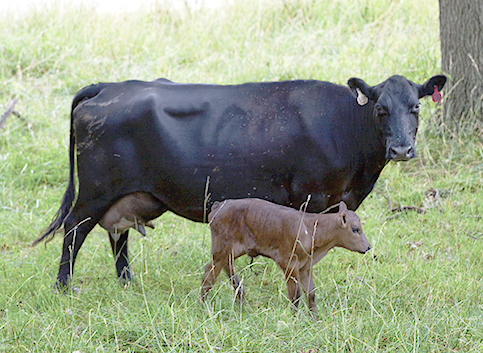Rachael Brooke, Phillips-Rooks District Extension Agent Agriculture and Natural Resources
Price Risk Management for Cow-Calf Producers: Part 6
Cow-calf producers use various strategies to manage price risk, including futures and options. Livestock Risk Protection (LRP) is a type of livestock price insurance that typically costs less than a put option. LRP makes payouts (indemnities) that replace the income that is lost due to a price decline. An LRP indemnity is calculated by taking the producer-selected target weight (for example, 550 lbs. for a feeder) times the difference between the actual price and the producer-selected coverage price. The larger the price decline, the larger an indemnity a producer receives. This article discusses the frequency and magnitude of LRP indemnities. How often do indemnities occur? For the highest coverage levels, indemnities occur much more frequently than lower coverage levels. When looking at the historic frequency of indemnities for LRP for feeder cattle (30-week endorsement for steers with a target weight of 550 lbs.) from 2007-2021 the highest range of coverage levels, or coverage prices that were 97.5-100% of expected price, indemnities occurred about half of the time. Indemnities were higher than premiums about 40% of the time. Indemnities are frequent for these high coverage levels because only a small decline in prices is necessary to trigger an indemnity. For the lowest range of coverage levels considered (90- 92.49%), indemnities only occurred 21% of the time. Indemnities occurred less often at lower coverage levels because actual prices only occasionally declined more than 10% below expected (futures) prices. There are two import
There are two important notes of caution about the frequency of indemnities. First, historic experience does not perfectly predict the future. Second, indemnities occurring about half of the time for high coverage policies does not mean that a producer can expect an indemnity every other year. A few years of significant price volatility or increasing prices could lead to multiple years without indemnities; there can also be years with back-to-back indemnities.
How large are LRP indemnities? When looking at data for LRP for feeder cattle (30-week endorsement for steers with a target weight of 550 lbs.) from 2007-2021 the largest indemnities for feeder cattle were paid in 2015, going over $20 per cwt for endorsements with the highest coverage levels (or coverage prices). Otherwise, indemnities over $10 per cwt occurred relatively rarely, including in 2012 and briefly in 2020. Looking at the average long-term net indemnities, which are indemnities minus the premium cost, from 2007-12 and includes years when no indemnities were paid, or when net indemnities would be negative, the average net indemnities for the highest coverage policies (97.5-100% coverage level) were $2.39 per cwt or $13.12 per head for a 550 lb. feeder. Average net indemnities were negative for the lowest coverage, but very small.
We conclude with three points. First, indemnities are much more frequent for higher levels of LRP coverage. Second, since 2007, net indemnities have been larger for higher coverage levels. Third, even for the highest coverage policies, a few years can pass without an indemnity and the largest indemnities (i.e. indemnities greater than $20/cwt) are relatively rare. LRP has both risk management and income benefits, consistent with both historic experience and the design of LRP.
For more information, please contact the local K-State Research and Extension Office.





